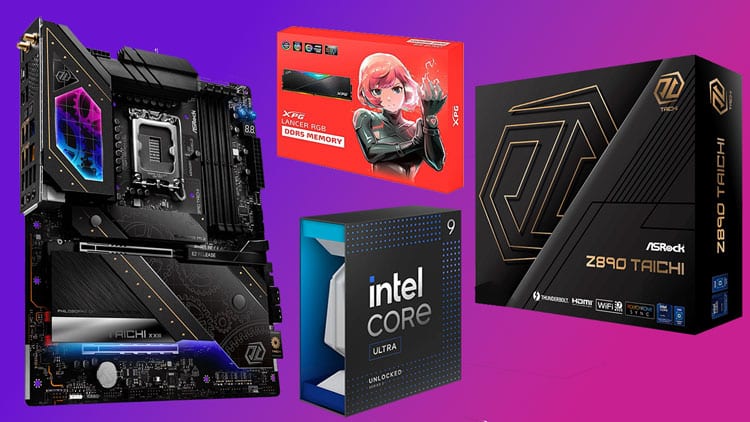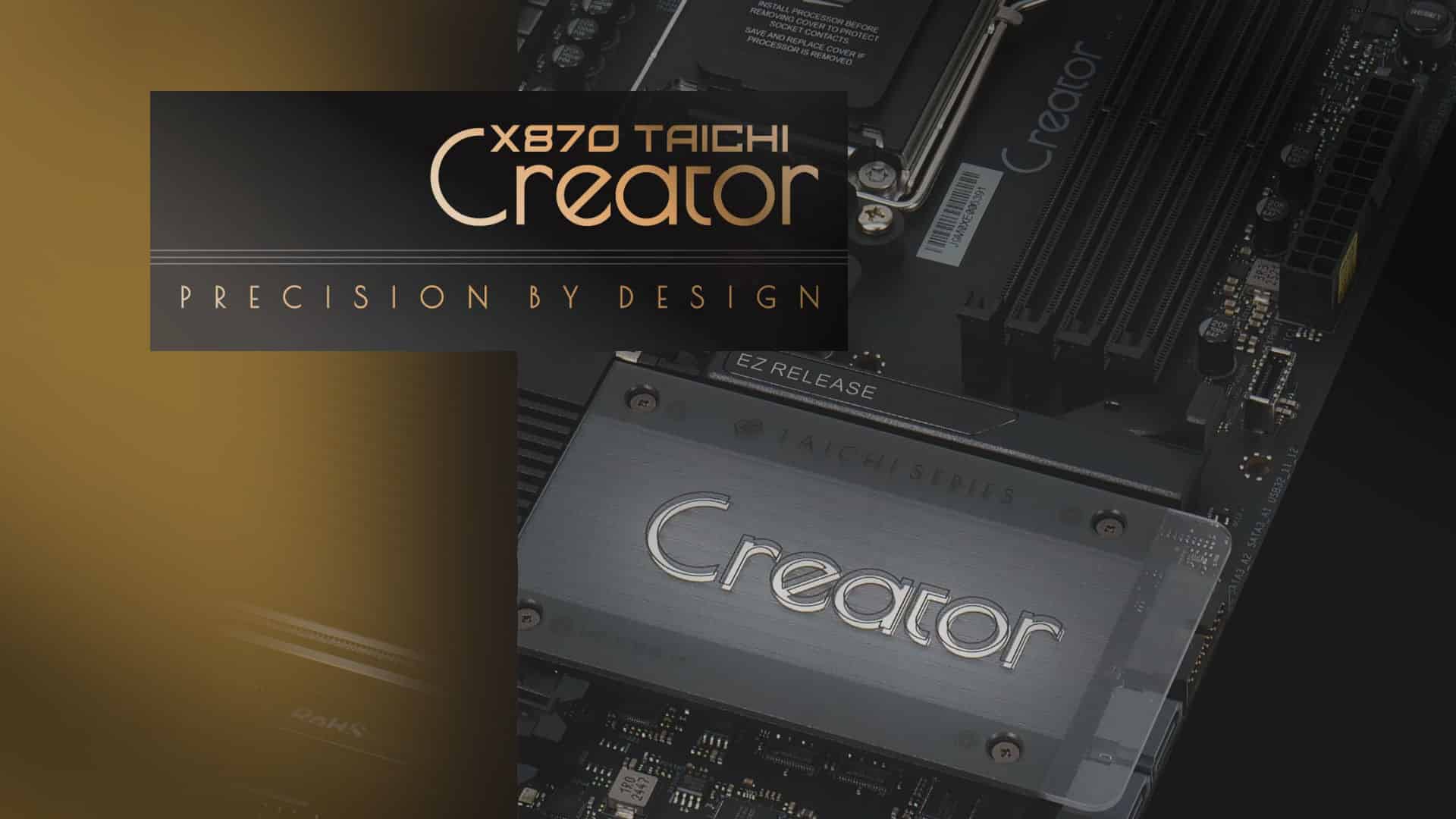There are two standard ways to boost your system’s performance, good cooling system and fast RAM. In this article I will explore the second, since I already use a top-performing Noctua cooler to handle the thermal loads of the Intel Core Ultra 9 285K that I will use as the reference CPU.
As most of you know, DDR5 is the successor to DDR4 memory and offers notable performance improvements through increased bandwidth. Both Intel and AMD CPUs that support DDR5 RAM benefit from the higher frequencies it provides in synthetic benchmarks and real-life applications, including gaming.
Before you purchase RAM, you must decide on the frequency, with DDR5-6000 being the sweet spot between price and performance. So far, 16GB of memory is ideal for everyday use and applications. However, if you run heavier applications (e.g., video editing software), you would see performance benefits if you went with 32GB or even 64GB of RAM. Another thing you should take into account is the supported XMP and EXPO speed profiles. These are optimal memory settings explicitly designed for Intel (XMP) or AMD (EXPO) systems, so you should choose according to your processor.
In today’s review, the workhorse will be an ASRock Z890 Taichi, for which I have to write some words since ASRock was kind enough to send it to me for a pin, along with an Intel Core Ultra 9 285K processor. The memory kits I will use are both provided by XPG, and I will mention more about them on the test methodology page.
Relevant reviews:
- AMD Ryzen 9 9950x CPU Review: Performance, Thermals & Power Analysis
- AMD Ryzen 9 9900x CPU Review: Performance, Thermals & Power Analysis
- AMD Ryzen 7 9700x CPU Review: Performance, Thermals & Power Analysis
- Windows 24H2 vs. 23H2. 12x Games, More than 550 Tests – Zen 4 (Ryzen 7 7800X3D)
- AMD Ryzen 7 7800X3D Revisit: The Best Gaming CPU
- AMD Ryzen 7 7800X3D CPU Review: Performance, Thermals & Power Analysis
- Intel Core Ultra 9 285K CPU Review: Performance, Thermals & Power Analysis



Thanks for the tests, but I don’t like how you completly ignore the timings on RAM. It’s a little less imporant than speed frequency but still makes a difference. Also you didn’t write if the memory works in Gear 2 (1:2) or Gear 4 (1:4) (especially important with AMD).
It all matters.
For example, DDR5-7200 CL34-42-42-84 (1:2) is faster than DDR5-9200 CL42-56-56-134 (1:4)
He is running 6000 c40! I’m sure ASRock really appreciates that. And comparing against 6000 c32, so what are we even testing here? The 8000 cas is kind a weird too I can’t find a kit what with those timings, the cheapest 8000 kit is cas 38. Anyway.
Your power testing is the only one I see that show the INTEL idle higher than AMD. I think most other sites just take the reported readings and not the actual. Some show INTEL cpu as idle only 4-5 watts, which I don’t think my laptop even can do. Ridiculous! Thank you for measuring the actual power consumption.
This website needs better software for commenting.
No formatting is possible, no line break, no whatsoever. Where is BBcode for example?
The text was written nicely and readable but is now posted as an unreadable pudding without dots and comma.
Oh man!
sorry we use the standard WordPress editor.
More than enough, what is important is the quality content offered by the website.
If I were an interested buyer, personally I would still wait 3 – 4 months for Intels’ “magic” bios and driver updatest to appear (which were publicly marketed weeks ago to fix performance and whatever).
Personally I would NOT buy at all, because there is still a HUGE red flag: Intel execs/marketing refuses to answer if this Arrow Lake is the only CPU generation on this socket.
No, a silly refresh in late 2025 with + 5 % performance does not count.
https://www.tomshardware.com/pc-components/cpus/massive-dell-blunder-leaks-intel-and-nvidias-mobile-roadmaps-nova-lake-panther-lake-cpus-and-genxx-gpus-listed
The Deall leak from this year shows that next-gen Nova Lake architecture will arrive Q4 2026/Q1 2027 and will bring a HUGE update for core count, performance and efficiency.
Both P-cores and E-core will be doubled = 16 + 32.
Other rumors this year (job descriptions) have shown Nova Lake will be the bigget jump since the core architecture 2006.
This is all in line with amd next huge leap which is Zen 6, which will abandon the low-performance, unefficient chiplet-crap introduced with Zen 2, togehter with the ancient crap technology copper wire bonding.
https://www.youtube.com/watch?v=ex_gPeWVAo0
Zen 5 is still stupidly overpriced and ancient crap packaging technology. Looking at pro-accelerators as MI300 and reading information on some forums, shows there will be big updates for modern packaging.
Core count is also now rumored to double.
If Intel execs/marketing continue to refuse to answer if Nova Lake will also come for this socket, buying Arrow Lake and this platform is a very very very unwise decision.
Thanks for testing.
Your power consumption tests are the real deal. I see some very different results compared to the other more mainstream testers.
Looks like peak- & average power consumption for both applications and gaming is still not good.
Also good to see you are testing games in 720p resolution. Lots of other testers still test 1080p + maximum graphic testing and don’t want to admit to themselves that in quite some new games even a rtx 4090 bottlenecks.
Critique and improvement proposal is that you don’t specify how you test the games; build-in benchmark or own custom scene= Do it like the testers at pcgameshardware and test with CPU-heavy custom scenes.
Drop the CringeBench 6 benchmark and for media encoding, please add AV01 codec (av1 format).
I would also like to see some power consumption tests for low-utilization applications; so far you only have tested the extreme, which is 100 % utilization. You also don’t specify which applications were used for that.
Another tests showing the E-core performance would be good. Also disabling E-cores and doing some performance tests.
Thanks and good luck.